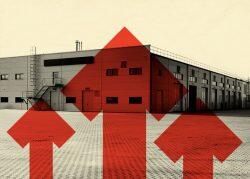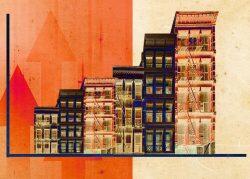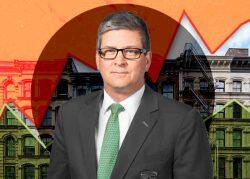The commercial real estate market is singing a sad tune as rising rates drive investors loony.
Commercial transactions are slowing as interest rates spike, Bloomberg reported. The market slowdown is putting apartment and industrial deals at risk, with one economist comparing the period to an iconic cartoon character suddenly realizing the bottom is falling out.
“It almost feels like a Wile E. Coyote moment,” MSCI Real Assets chief economist for real estate Jim Costello told the outlet. “All the other signals tell you that there should be some sort of a change ahead — a drop in prices.”
That change is already showing. Green Street reported commercial property prices dropped 5 percent in the second quarter and may drop another 5 percent by the end of the year. Apartment prices fell 4 percent from May to June, while warehouse prices dropped 6 percent.
Those sectors are still proving to be jewels of the pandemic, when property values soared for the two stable markets — they’re just losing some of their shine. Industrial prices are 42 percent above pre-pandemic levels, according to Green Street, while multifamily prices are up 16 percent.
Read more



Commercial property transactions hit $375.8 billion in the first half, suggesting to some that the market hasn’t hit a wall yet. There was $809 billion in deals last year.
But that metric is considered a lagging indicator because it typically takes months for commercial deals to close.
A decline in commercial lending, brought on by the uncertainty of the invasion of Ukraine and the Federal Reserve’s attempts to cut down inflation, is part of the threat to apartment deals. In February, the Mortgage Bankers Association projected more than $1 trillion in commercial real estate lending for the year.
More recently, the MBA projected only $733 billion, expecting the market to contract by 18 percent.
Franklin BSP Realty Trust executive Michael Comparato noted that multifamily assets are being repriced in real time.
“We’re seeing transactional volume fall off the cliffs as buyers and sellers find a new equilibrium given where interest rates are,” Comparato said to Bloomberg.
— Holden Walter-Warner
